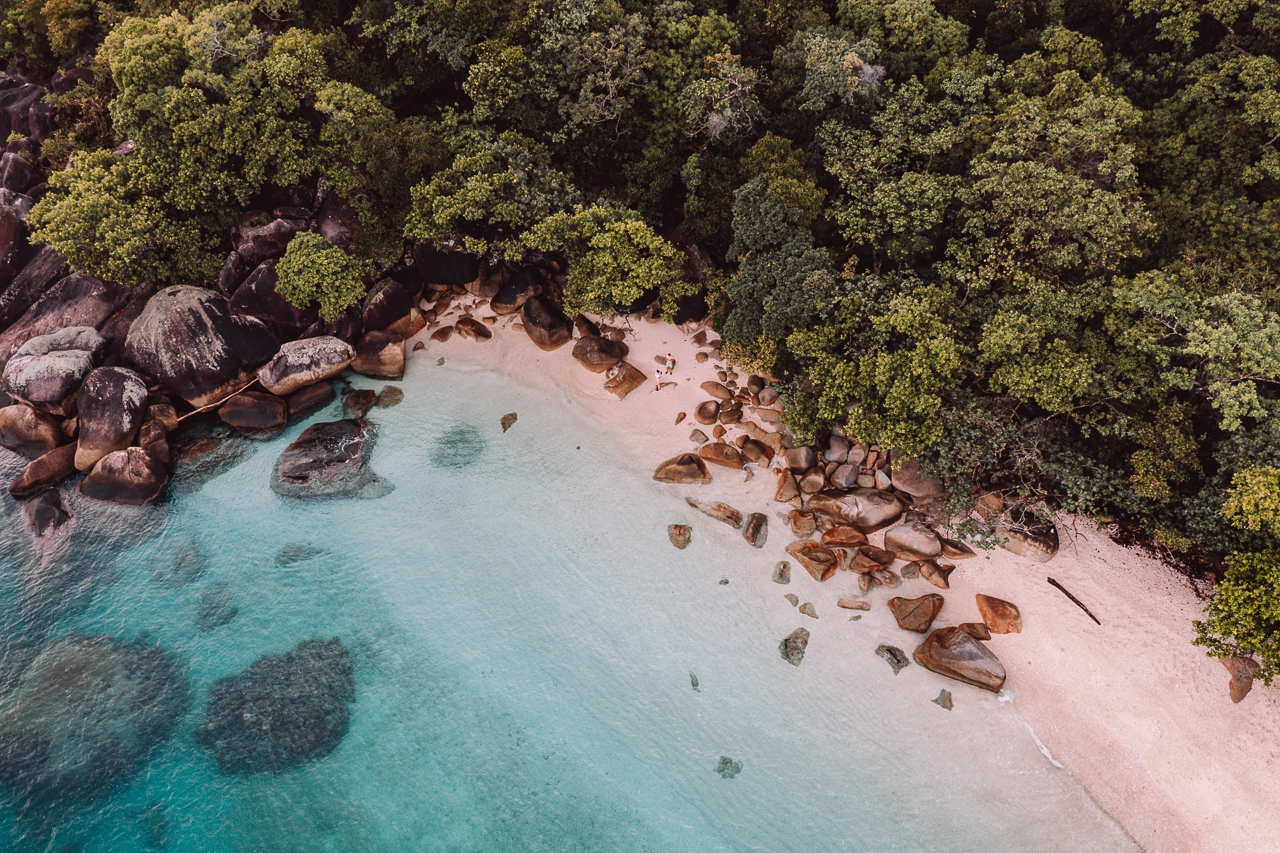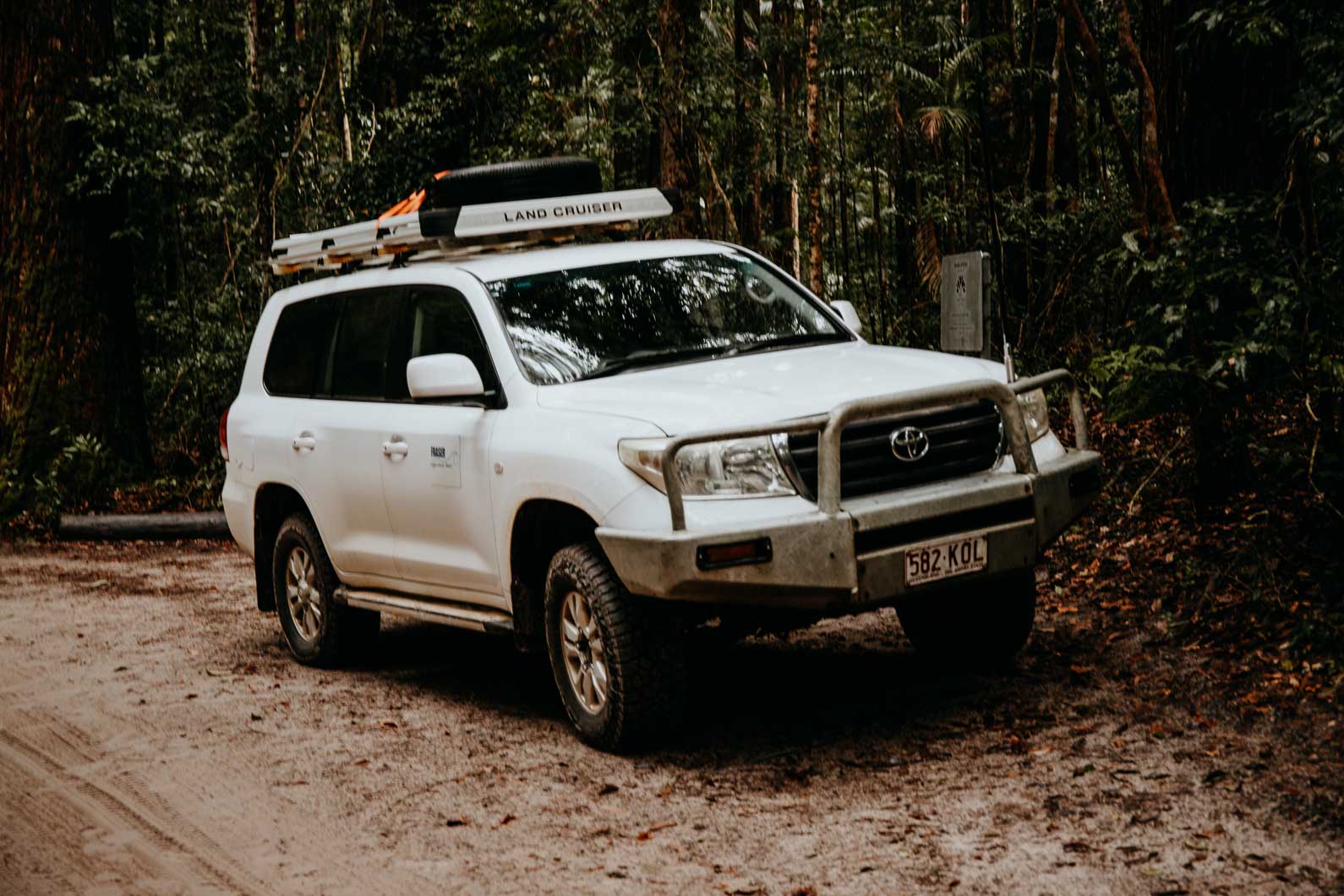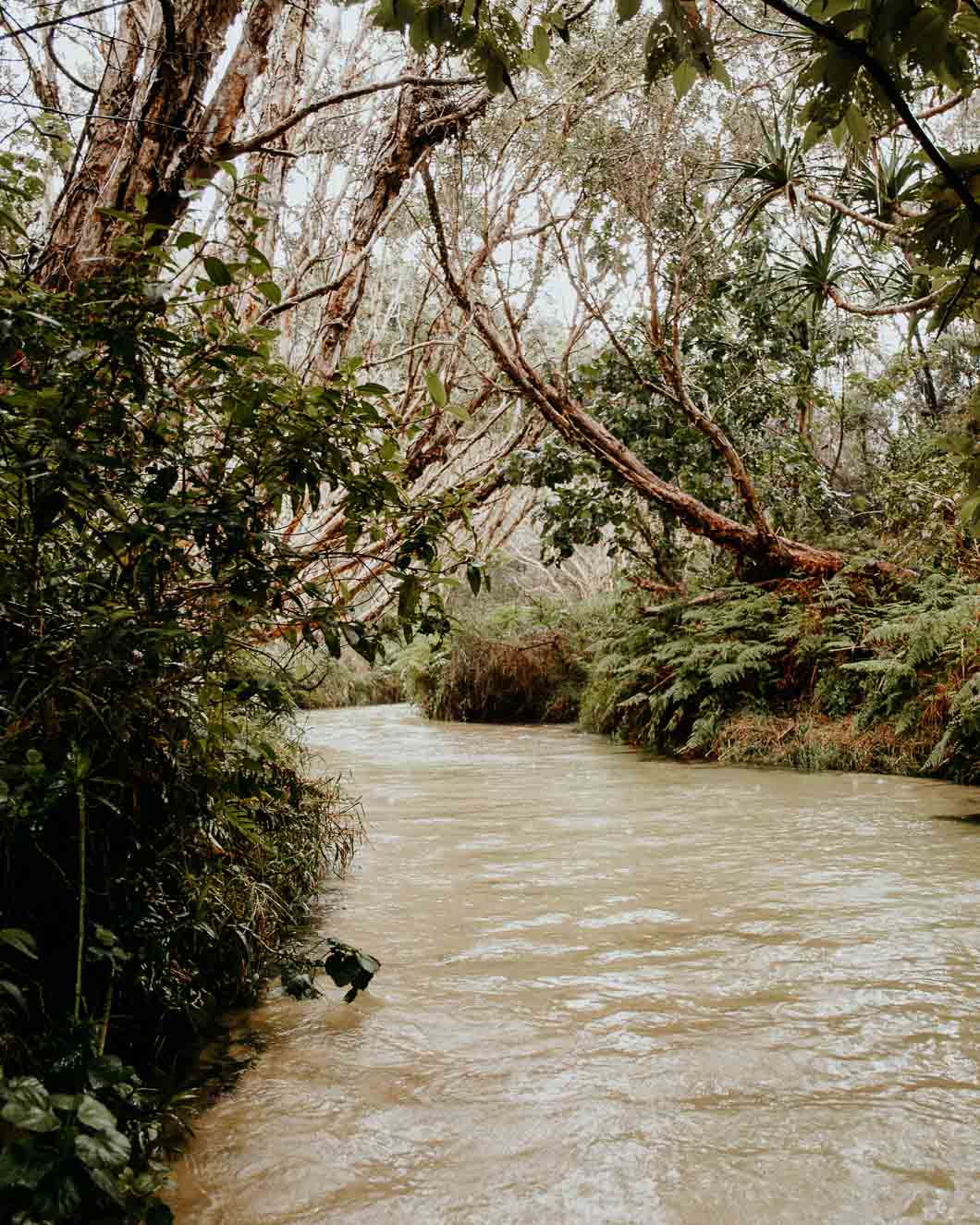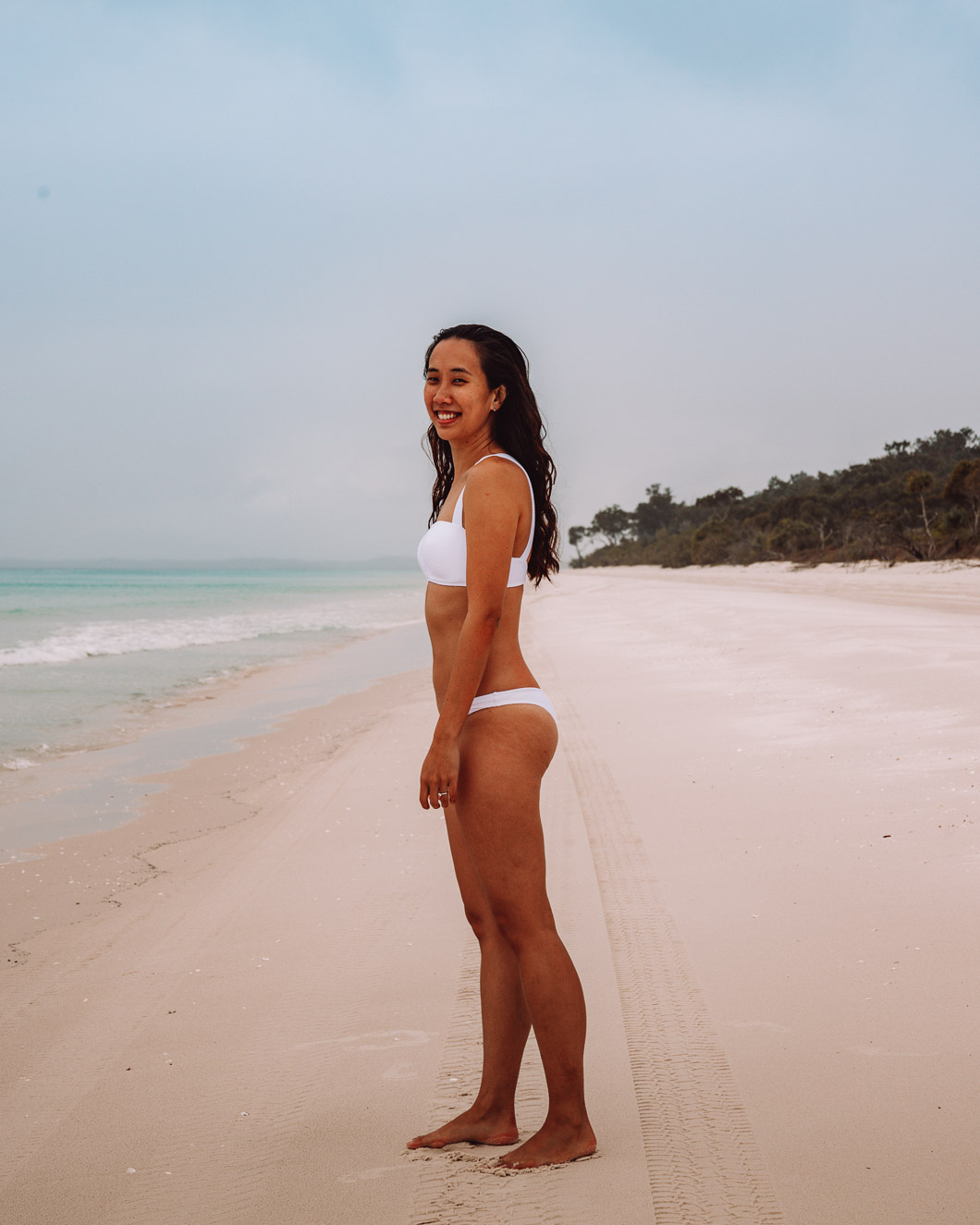
Local Guide

A 4WD vehicle is necessary to be able to get around Fraser Island so if you don’t have your own, here are several ways to access one.
Key attractions in the middle and on the west side of Fraser Island include:
The lush rainforest forms part of Pile Valley and now engulfs the historical logging station. A sturdy wooden platform trail runs parallel to the banks of Wanggoolba Creek where you will enjoy the birdsong as the sun filters slivers of light through the lush canopy.
A peaceful spot where you’ll take your morning tea or lunch break. Beware of a few feathered friends who hang around waiting to snatch crumbs from your chocolate cake.
The SS Maheno was a New Zealand ocean liner that operated on the Tasman Sea between 1905 and 1935. It was even employed during World War I. It was washed ashore on Fraser Island’s west coast by a cyclone in 1935 and since this time, the rusting wreck has remained for visitors and photography enthusiasts to admire.
We visited the shipwreck as the tide was coming in, so unfortunately we were unable to walk around the entire wreck. It is best to observe the disintegrating ship from a respectable distance as parts of the ship continue to fall off with the ebb and flow of the ocean. There is a commemorative plaque and information board further up the shore for history buffs.
This long rugged stretch of sand is the famous sandy highway of Fraser Island. Vehicles are permitted to travel up to 80 km/hour, navigating the bumps and fisherman wielding lines in the rough waves.
The experienced and the brave set up camp on this side of the island, exposed to the elements. Swimming is not advised as the waves are unforgiving and the beach is unpatrolled. Sharks and irukandji jellyfish have also been seen in these waters.
Barely knee deep, Eli Creek is the fastest flowing freshwater creek on Fraser Island. Depending on your tour choice and time permitting, you may have time to grab an inflatable donut and float peacefully down the creek leading to the ocean. Wading through the warm shallows is also permissible.
The Pinnacles Coloured Sands is a visually compelling sight and bears significant historical importance to the Butchulla people. Legend says that the Rainbow Serpent of the Butchulla people died for his lover whilst protecting her from her jealous husband. When he died, he fell to the earth and shattered into many coloured pieces, thus forming what we know and see as the Pinnacles.
There are 72 different colours in the Pinnacles, formed by the fusion of sand and clay over many years. The coloured sands are found north of the Maheno Shipwreck and there is a short pathway from the beach where you can witness the sand cliffs up close.
Unfortunately, poor weather and limited time meant that the beauty of the Pinnacles was slightly dulled during our visit. We’d expect the different hues would be more evident with sunshine and a clear sky.
The second largest lake on Fraser Island is renowned for its crystal clear fresh water that wouldn’t look out of place in the Philippines. The beautiful perched dune lake is rimmed by picture perfect white sand that dazzles no matter the weather.
The lake covers 150 hectares and is over five metres deep! But there’s no need to worry about dumping waves, unseen rips or dangerous marine animals in this body of water. Carefree swimming and lounging on the sandy shores is a wonderful way to round out a day trip to this island paradise.
We experienced all the above attractions with Fraser Experience Tours on their 1 day Fantastic Fraser Island Experience Tour. Pick up and drop off from your accommodation is available and lunch is provided.
Tours start from $239 per person – booking link here.


Departing from the marina, the boat will cross the Great Sandy Straits and towards Moon Point (the halfway point of Fraser Island). You’ll continue north into Platypus Bay and witness marine life frolicking in the calm waters off Fraser Island.
Hervey Bay is home to some of the best whale watching encounters in the world. The best period for whale watching in Hervey Bay is during mid July – mid October as the humpback whales migrate south. Peak season is August – September. The whales are curious and social creatures so don’t be shy and give them a wave. Keep your eyes peeled for dolphins, dugongs and turtles too.
For the super duper lucky folk, you may get the chance for an intimate, immersive experience allowing you to swim close to the majestic humpbacks in their natural environment. This is entirely dependent on conditions and the tour operator’s discretion.
Hop into a kayak and paddle up this freshwater creek into the hinterland of Fraser Island. You’ll glide past local flora and fauna including mangroves and bird life. The water is so fresh here that it is possible to drink (despite the unappealing colour!).
Paddle far enough up the creek and you’ll no longer hear the sounds of the ocean. Here, you can pause and sit for a moment in this pocket of serenity. Once you reach the edge of the mangroves (they thrive on a mixture of salt and freshwater), take care not to venture too much further. The water system is a complex maze and for those who do not know the land, they will find themselves lost.
If you’re quick, you may spot a kingfisher flitting between the reeds and branches of the creek. Kingfishers are notoriously territorial with only one male kingfisher occupying an area at any one time. We learned that should another male enter an occupying kingfisher’s territory, the alpha will attack the intruder and try to drown it!
Landing at this location, you’ll be taken to the foot of the ancient sand dune which is held up by lumps of coffee rock. Coffee rock is the compilation of compressed sand and vegetation of the island over many years. It crumbles rather easily within your hands but wouldn’t taste anything like our beloved caffeinated beverage!
Get your leg workout for the day climbing up the sand dune and marvel at the 360 degree views of Platypus Bay and Fraser Island hinterland. If you’re lucky, a white bellied sea eagle may make an appearance.
The iconic Wathumba Creek transforms into a large ocean lake at high tide. You’ll have the opportunity to snorkel here to try to spot many species of fish, turtles and stingrays.
We experienced most of the above attractions with Tasman Venture on their Remote Fraser Island and Whale Experience. Pick up and drop off from your accommodation is available and lunch is provided.
This tour costs $195 per person – booking link here.
We did not visit Wathumba Creek on the day of our expedition as given the presence of several whales in Platypus Bay, more time was allocated to whale watching encounters. Snorkelling was offered off the shore close to Bowarrady Creek. Wetsuits, flippers and snorkels are all provided.


Fraser Island’s terrain is vast and varies so sometimes a day trip isn’t enough! Here are some other sights and attractions generally not covered on a day trip alone.
Between Waddy Point and Indian Head, you’ll find natural rock pools by the ocean. They’re known as the Champagne Pools thanks to the bubbling water caused by waves crashing over the volcanic rocks.
This is a safe spot to swim but be careful of sharp and uneven rocks.
The world’s highest perched dune lake sits 130 metres above sea level and smack bang in the middle of Fraser Island. A safe and suitable spot for swimming and sunbathing.
Hammerstone Sandblow is found on your way to Lake Wabby. Located on the lower east coast of Fraser Island, it has been formed by the wind and the tides over thousands of years. The wind from offshore continually blows sand across this sand dune and eventually will fill Lake Wabby (a barrage lake) until it ceases to exist.
It is a mighty trek over the sand dune but a dip in the swimming hole awaits you on the other side. Best to check out this natural formation before it disappears forever!
This 2-day tour offers more sights and attractions plus accommodation over a couple of nights – booking link here.
The options for exploring Fraser Island are:
If you are travelling to Fraser Island with a 4WD (either privately, with a rental 4WD or with a tour company), the ferries depart from River Heads, approximately 20 minutes drive from Hervey Bay.
If you are visiting Fraser Island on a boat (either privately or with a tour company), you will depart from Great Sandy Straits Marina Urangan Hervey Bay.
Yes, but you must have access to a 4WD as these are the only types of vehicles that will be able to navigate the sandy terrain. Vehicle access permit fees apply.
The cost to go to Fraser Island depends on your method of transport. If you choose to go without a tour company, a brief summary of costs would look something like this:
Grand total: $500-800 as an approx. budget
From $300/day. Rates will vary between companies and you will need to have sufficient insurance too. Some companies may not allow you to rent a 4WD if you have little to no experience driving this type of vehicle so check each company’s terms and conditions.
For more information visit rainbowbeach4x4hire.com.au which offers 4WD hire from Rainbow Beach.
Australia has a reputation for its wild and (sometimes) dangerous animals and a lot of this information is true. But some of its dangers are often unseen, such as the strong waves and rips of the ocean and smaller critters.
Fraser Island is home to wild dingoes, irukandji jellyfish and its beaches are all unpatrolled. None of these elements will be dangerous to you if you exercise common sense. Do not approach or agitate the dingoes and do not swim in the oceans.
Swimming in the sea off Fraser Island is not recommended. The beaches are unpatrolled, the ocean is wild and home to unpredictable and fatal marine wildlife.
It would be best to swim in the shallows of the freshwater lakes and swimming holes. Always have another adult nearby.
Leave it alone. Do not panic. Do not antagonise it or try to pat it. Never feed the dingoes. Stay within reach of children, even small teenagers. Do not run as running or jogging could trigger a negative dingo interaction.
Dingoes are wild animals and should be observed from a safe, respectable distance. If you are camping on Fraser Island, camp in fenced areas when possible and secure all food, rubbish, fish and bait. Food and drinks are not permissible at lakeshores.
Yes. Camping permits must be purchased online in advance before setting up camp.
For further information of campsites, fees and conditions for camping in K’gari, visit this website.
As long as you want. If you love camping, fishing, 4WD-ing and being outdoors, you will adore your time on Fraser Island.



*** Affiliate links disclaimer ***
Lorem ipsum dolor sit amet, consectetur adipiscing elit. Ut elit tellus, luctus nec ullamcorper mattis, pulvinar dapibus leo.
We acknowledge Aboriginal and Torres Strait Islander peoples as the First Australians and Traditional Custodians of the lands where we live, learn and work.